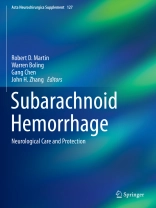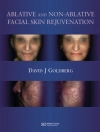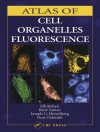This book highlights the latest developments in acute and delayed neurovascular injury studies including delayed cerebral vasospasm, early brain injury, micro-circulation compromise, spreading cortical depolarization, neuroinflammation, and long-term cognitive dysfunctions after subarachnoid hemorrhage. About 32 chapters cover original presentations from the 14th international conference on neurovascular events after subarachnoid hemorrhage, held in Los Angeles in October 2017. Neurosurgeons, neurologists, and neuro-ICU practitioners discuss clinical observations, new pilot treatments, clinical trials, academic and industrial interactions, including surgical and endovascular approaches, brain injury monitoring, new developments in brain imaging, ICU management, early brain injury scales and management, counter cortical depolarization management and anti-inflammation management. In addition, animal models used to study acute and delayed neurovascular events, the basic mechanisms of vascular, neuronal, and CSF physiology, new experimental treatment strategies, new frontiers in the treatment of neurovascular injuries, and new research directions are discussed.
Tabela de Conteúdo
Chapter 1: Vasospasm: A Personal Odyssey .- Chapter 2: History of Vasospasm Research in Japan: Commemoration of Professor Tomio Ohta.- Chapter 3: Heparin Treatment in Aneurysmal Subarachnoid Hemorrhage: A Review of Human Studies.- Chapter 4: Subarachnoid Hemorrhage Related Epilepsy.- Section 1: Basic Science Section.- Chapter 5: Cell Culture Model to Study Cerebral Aneurysm Biology.- Chapter 6: Rat model of Intracranial Sneurysm: Variations, Usefulness and Limitations of the Hashimoto Model.- Chapter 7: Possible Involvement of Caspase-Independent Pathway in Neuronal Death after Subarachnoid Hemorrhage in Mice.- Chapter 8: Nox2- and Nox4 Participate in ROS-induced Neuronal Apoptosis and Brain Injury During Ischemia-Reperfusion in Rats.- Chapter 9: Link Between Receptors that Engage in Developing Vasospasm After Subarachnoid Hemorrhage in Mice.- Chapter 10: Aquaporin4 Knockout Aggravates Early Brain Injury Following Subarachnoid Hemorrhage Through Impairment of the Glymphatic System in Rat Brain.- Chapter 11: The Role of Galectin-3 in Subarachnoid Hemorrhage: A Preliminary Study.- Chapter 12: 17-Allylamino-Demethoxygeldanamycin Ameliorate Microthrombosis via HSP90/RIP3/NLRP3 Pathway After Subarachnoid Hemorrhage in Rats.- Chapter 13: TAK-242, Toll-like Receptor 4 Antagonist, Attenuates Brain Edema in Subarachnoid Hemorrhage Mice.- Chapter 14: Subarachnoid Hemorrhage Pattern Predicts Acute Cerebral Blood Flow Response in the Rat.- Chapter 15: Toll-like Receptor 4 and Tenascin-C Signaling in Cerebral Vasospasm and Brain Injuries After Subarachnoid Hemorrhage.- Chapter 16: Spreading Depolarization During the Acute Stage of Experimental Subarachnoid Hemorrhage in Mice.- Chapter 17: The PERK Pathway Plays a Neuroprotective Role during the Early Phase of Secondary Brain Injury Induced by Experimental Intracerebral Hemorrhage.- Chapter 18: The Time-course of Cognitive Deficitsin Experimental Subarachnoid Hemorrhage.- Chapter 19: Endovascular Ultraviolet Laser-facilitated Reversal of Vasospasm Induced by Subarachnoid Hemorrhage in Canines.- Section 2: Clinical Science Section.- Chapter 20: Role of Bedside Multi-Modality Monitoring in the Detection of Cerebral Vasospasm Following Subarachnoid Hemorrhage.- Chapter 21: Development of a Delayed Cerebral Infarction Load Scoring System (DCI Score).- Chapter 22: Changes on Dynamic Cerebral Autoregulation Are Associated with Delayed Cerebral Ischemia in Patients with Aneurysmal Subarachnoid Hemorrhage.- Chapter 23: Transcranial Doppler Ultrasound, Perfusion Computerized Tomography and Cerebral Angiography Identify Different Pathological Entities and Supplement each Other in the Diagnosis of Delayed Cerebral Ischemia.- Chapter 24: Role of Computational Fluid Dynamics for Predicting Delayed Cerebral Ischemia After Aneurysmal Subarachnoid Hemorrhage: Study Protocol for a Multicenter Prospective Study.- Chapter 25: Thromboelastometry as a Comprehensive Assessment of Hypercoagulation After Aneurysmal Subarachnoid Hemorrhage: A Case Report and Literature Review.- Chapter 26: The Treatment of a Ruptured Anterior Communicating Artery (ACo A) Aneurysm with Coiling and Flow Disruptor (WEB-Device) and Management of Symptomatic Post-interventional Delayed Vasospasm: A Case Report.- Chapter 27: Treating Patients with Frontal Neurocognitive Deficits After SAH And Stroke.- Chapter 28: Intraarterial Administration of Verapamil for the Prevention and Treatment of Cerebral Angiospasm.- Chapter 29: Cerebral Arterial Compliance in Polytraumazed Patients with Cerebral Vasospasm.- Chapter 30: The Сerebrovascular Time Constant in Patients with Head Injury and Posttraumatic Cerebral Vasospasm.- Chapter 31: Current Open Surgical Indications for Revascularization in Cerebral Ischemia.- Chapter 32: The Role of Transcranial Doppler in Cerebral Vasospasm: A Literature Review.
Sobre o autor
Robert D. Martin, M.D. is Professor of the Floyd S. Brauer Chair in Anesthesiology at Loma Linda University, Loma Linda, California and has held this position since 2004. He is a member of the Board of Trustees of Loma Linda University. He is Board Certified in Pain Medicine and Anesthesiology. His primary clinical interests have been in the areas of Cardiac Anesthesiology and Pain. Dr. Martin was a pioneer in developing anesthesiology protocols for infant heart transplantation.
Warren Boling, M.D., FRCSC, FRACS is Professor, Program Director, and Chairman of the Department of Neurosurgery at Loma Linda University, Loma Linda, CA. He is the past president of the Society of Brain Mapping and Therapeutics and a member of the SBMT Board of Directors. He is a member of the Faculty Medical Group of Loma Linda University Board of Directors. Dr Boling is an academic neurosurgeon and investigator, his primary interests are in the research and neurosurgical aspects of brain imaging, epilepsy, neuro-oncology, and international medicine. He is an expert on the fine topographic detail of human neuro-anatomy, which has led to the identification of anatomical and functional relationships in the human brain.
Gang Chen, M.D., Ph.D. is professor and vice Director of the Department of Neurosurgery at The First Affiliated Hospital of Soochow University, Suzhou, China. He also severs as Director of the Translational Stroke Research Team, and as Chair of the Division of Science & Technology. Dr. Chen’s research focuses on subarachnoid hemorrhage (SAH), which is a violent disease affecting the human health. In SAH, Dr. Chen has put forward “Right time, Right therapy” therapeutic principle. He continues to identify novel regulatory mechanisms in candidate proteins such as Cy PA/CD147, neurexin-1β/neuroligin-1, etc., and to evaluate the current development, challenges and potential clinical translation of theseresearches. Dr. Chen’s research efforts have been supported by grants from the National Natural Science Foundation of China.
John H. Zhang, M.D., Ph.D. (Editor) Loma Linda University Medical School, Loma Linda, CA, is currently a Professor of Anesthesiology, Neurosurgery, Neurology, Basic Sciences (Physiology & Pharmacology), Pathology & Human Anatomy, and Nursing at Loma Linda University Medical Center. He also serves as Director of the Center for Brain Hemorrhage Research, as Vice-Chair of the Department of Basic Sciences (Chief of Division of Physiology), as Director of the Physiology Graduate Training Program, and as Director of the Basic Science Research Division in Anesthesiology. Dr. Zhang’s research efforts have been supported by grants from the American Heart Association, National Institute of Health, and Department of Defense as well as other regional foundations and industry. Dr. Zhang has published more than 600 peer-reviewed articles and has been invited to speak in meetings, seminars, and grand rounds more than 300 times.












